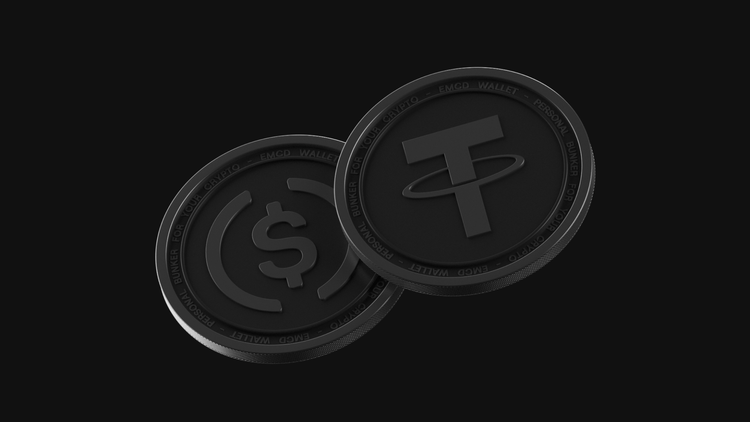Why Stablecoins Are Reshaping Crypto Payments for Global Businesses

As cryptocurrency adoption accelerates, one pain point remains: volatility. Traditional digital assets like Bitcoin and Ethereum offer speed and transparency, but their unpredictable pricing limits real-world business use. On the other side, legacy banking systems are slow, expensive, and not built for a global, always-on economy.
Enter stablecoins. Pegged to fiat currencies, these blockchain-based tokens deliver the speed of crypto with the stability of traditional finance — making them ideal for business payments. From e-commerce and SaaS to cross-border invoicing, stablecoins are becoming a cornerstone of how modern businesses transact. This guide unpacks the role of Stablecoins in Business Crypto Payments, and why their stability and flexibility are reshaping payment infrastructure in 2025 and beyond.
What Makes a Stablecoin 'Stable'? Understanding the Digital Asset Behind Predictable Payments
A stablecoin is a type of cryptocurrency designed to maintain a consistent value, typically by being pegged to real-world assets such as the US dollar, euro, or even commodities like gold. While traditional cryptocurrencies like Bitcoin and Ethereum experience frequent price swings, stablecoins are built for predictability — which makes them ideal for business payments and everyday transactions.
There are three main types of stablecoins used in the market today:
- Fiat-collateralized stablecoins are backed 1:1 by reserves of fiat currency, such as the US dollar. Popular examples include USDT (Tether) and USDC (USD Coin). These are among the most widely used for business payments due to their liquidity and transparency
- Crypto-collateralized stablecoins are backed by other cryptocurrencies, typically held in overcollateralized smart contracts. The most well-known example is DAI, which is decentralized and often favored by Web3-native businesses operating in DeFi environments
- Algorithmic stablecoins use software and supply-balancing mechanisms to maintain price stability. These coins, such as Frax or UXD, don’t rely on direct asset backing but instead maintain their peg through coded rules and incentives
Each model offers trade-offs in decentralization, risk, and regulatory clarity — but all aim to combine the speed of blockchain payments with the price stability required for real-world use.
Why Price Stability Is the Missing Link in Business Crypto Adoption
In business, one thing matters more than speed: price certainty. And this is where traditional cryptocurrencies fall short. Even a 3–5% volatility swing in an hour can make or break a margin-sensitive transaction.
Stablecoins solve that. By maintaining a peg to fiat currencies like the USD or EUR, they let businesses plan, price, and settle payments with confidence. There’s no need to adjust invoices mid-transaction or hedge against wild price changes.
From routine purchases to high-value B2B deals, stablecoins make cryptocurrencies usable in everyday business — not just speculative assets on a chart. Confidence drives adoption, and stablecoins deliver the consistency companies need to integrate crypto into their daily operations. You can use payments in cryptocurrency for business in your website.
The Business Benefits of Stablecoins: Faster, Cheaper, Smarter Payments
For companies operating across borders or online, stablecoins deliver tangible advantages over both traditional banking and volatile crypto. Their benefits include:
| Benefit | Why It Matters |
| Fast settlement | Payments clear in minutes, improving cash flow and reducing operational lag |
| Lower fees | No middlemen or banking layers to inflate transaction costs |
| Fraud protection | Immutable records reduce chargebacks and disputes |
| Global reach | Accept payments from anywhere — without currency conversion delays |
| DeFi integration | Tap into decentralized lending, swaps, and yield tools |
| Flexibility | Hold, spend, or convert with minimal volatility risk |
Stablecoins offer a rare combination: the global, programmable nature of crypto with the financial stability businesses need. For startups and enterprises alike, they open the door to a faster, more flexible way to move money.
Top Stablecoins Businesses Trust in 2025
With hundreds of coins in circulation, not all stablecoins are equal in market trust, compliance, or business readiness. Here's a look at the most relevant options today:
| Stablecoin | Backing Model | Best Use Case | Adoption |
| USDT | Fiat-backed (USD) | High-volume, general-purpose transactions | Broad, global |
| USDC | Fiat-backed (USD) | Compliance-first, regulated markets | U.S. and EU-friendly |
| DAI | Crypto-collateralized | DeFi-native, decentralized operations | Web3 ecosystems |
| BUSD | Fiat-backed (USD, sunset) | Previously used in Binance ecosystem | Being phased out |
Whether you need liquidity, transparency, or decentralization, there’s a stablecoin designed to fit your business model.
Stablecoins vs. Traditional Fiat and Volatile Cryptocurrencies: The Best of Both Worlds
Stablecoins bridge two financial worlds — combining the trust of traditional fiat currency with the speed and programmability of digital assets. While fiat transactions often involve delays, fees, and third-party clearance, stablecoins settle on-chain within minutes, offering an agile alternative.
Compared to volatile cryptocurrencies like Bitcoin or Ethereum — which can swing in value by 5–10% in a single day — stablecoins maintain price consistency. This predictability makes them ideal for everyday business transactions where budgeting and financial planning are essential.
In today’s fast-moving digital economy, stablecoins provide the accessibility of blockchain systems, the security of decentralized custody, and the reliability of a pegged value — all within a single, scalable ecosystem. For businesses, it’s a future-ready payment tool that delivers the best of both fiat and crypto.
Borderless Business: How Stablecoins Unlock Cross-Border Flexibility
International transactions have long been plagued by slow banking rails, inflated currency conversion fees, and regional banking restrictions. Stablecoins offer a digital workaround — enabling cross-border value transfers that are fast, low-cost, and frictionless.
By operating on decentralized blockchain networks, stablecoins eliminate the need for banking intermediaries and allow for real-time settlements, even across time zones. Businesses can pay international partners, settle invoices, or launch global campaigns without navigating complicated currency exchanges.
For global commerce, stablecoins serve as a flexible currency layer — an efficient financial passport in a world of increasingly digital trade.
Security, Compliance & Regulation: What Every Business Must Know
Adopting stablecoins comes with responsibility. As governments adapt to the growth of digital assets, compliance standards around Know Your Customer (KYC), Anti-Money Laundering (AML), and tax reporting are evolving rapidly.
Top-tier stablecoins like USDC are issued by regulated entities and backed by fully audited reserves, making them more transparent and reliable for business use. Still, companies must ensure that their systems support transaction monitoring, data protection, and proper key management.
Failing to meet these obligations risks legal penalties and reputational damage. Staying ahead of the regulatory curve means integrating security-first infrastructure and working with compliant, transparent stablecoin providers.
Where Theory Meets Practice: How Businesses Are Using Stablecoins Today
Stablecoins aren’t just theoretical tools — they’re transforming business workflows in real time.
- SaaS & Freelance Payments: Platforms now send invoices in USDC, offering same-day settlement for remote teams
- Payroll in LATAM & Africa: Startups use stablecoins to pay global employees, sidestepping inflation and banking restrictions
- Marketplace Settlements: E-commerce platforms disburse seller earnings instantly with stablecoins, avoiding delays from banks
- API-Driven Services: Crypto gateways let businesses integrate token payments and auto-conversion with just a few lines of code
From fintech startups to enterprise platforms, the use of stablecoins is reshaping how digital businesses manage liquidity, pay vendors, and move capital globally — all with fewer barriers and more control.
Challenges and Risks of Using Stablecoins
While stablecoins offer powerful benefits, they also come with risks businesses must consider. The biggest concern is depegging — when a coin loses its 1:1 value against fiat, as seen in past market shocks. This can disrupt payments and damage trust.
Another risk lies in the transparency of reserves. Not all issuers offer clear audits, raising questions about the true backing of the tokens being used. Regulatory bans in some regions and the centralization of stablecoin services further complicate adoption.
As stablecoins become more integrated into finance, businesses must evaluate their exposure and choose partners that maintain transparency, liquidity, and regulatory alignment.
Conclusion
In today’s fast-moving economy, stablecoins offer businesses the best of both worlds: the innovation of crypto and the predictability of fiat. From faster settlements to global reach, their role in modern finance is only growing. Now’s the time to explore what role stablecoins play in the payments your business handles every day.
FAQ
How do stablecoins provide price stability in crypto payments?
Stablecoins are pegged to fiat currencies, maintaining their value through reserves or algorithms. This helps businesses avoid volatility during a transaction.
Which stablecoins are most widely accepted by businesses?
USDT, USDC, and DAI are the top stablecoins accepted globally. They offer strong liquidity, transparent backing, and are widely integrated into crypto payment systems.
Are stablecoin payments faster or cheaper than traditional methods?
Yes. Stablecoin transactions typically settle within minutes and have lower fees compared to credit card or bank payments.
How do I integrate stablecoins into my existing payment system?
Businesses can integrate stablecoins using crypto gateways, APIs, or wallet plugins that connect to online checkouts and invoicing tools.
Are there regulatory risks with using stablecoins for business?
Yes. Regulatory requirements vary by region, and businesses must follow KYC, AML, and tax rules to stay compliant.
Can stablecoins help businesses manage cross-border payments more efficiently?
Absolutely. They bypass banking delays and currency conversion fees, offering a faster, more flexible way to transact globally.




